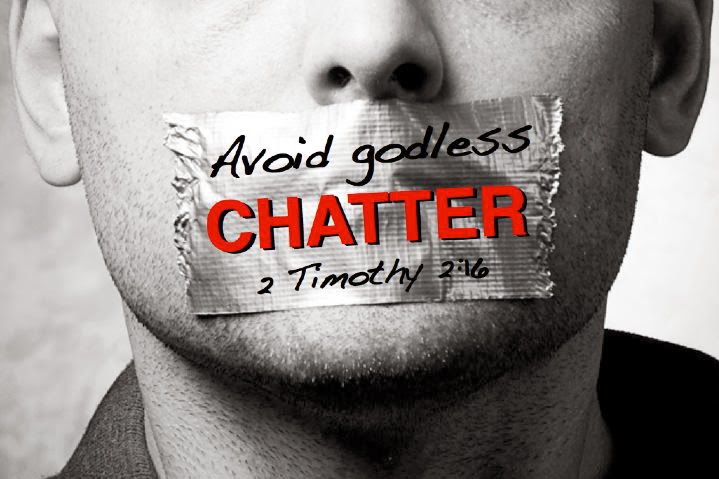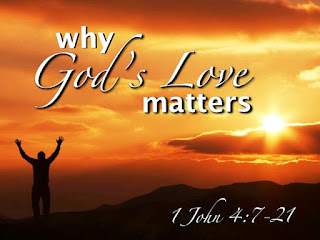Sermon Outline: 1st John Introduction
Introduction to 1st John
Pastor Jason Stewart
I. Introduction:
a. What do we know about the Book of 1st John?
i. Author: The Apostle John
ii. Date: AD 85-90
iii. Location: Ephesus
iv. Audience: Asia Minor
v. One of Five NT Books written by John
1. The Gospel of John
2. 1st John
3. 2nd John
4. 3rd John
5. Revelation
vi. External Evidence supporting John as the author
1. Early Testimony of Church Fathers all said the Apostle John was the author.
a. Papias
b. Polycarp
c. Justin Martyr
d. Irenaeus
e. Clement of Alexandria
f. Tertullian
g. Origen of Alexandria
h. Dionysius of Alexandria
vii. Internal Evidence supporting John’s authorship
1. Similarities to the Gospel
a. The Purpose of both letters is to inform the reader that it is our “Faith in Christ” that enables us to receive Eternal Life (1 Jn. 5:13/ Jn. 20:31)
b. The Word of Life (1 Jn. 1:1-2/Jn. 1:1-4)
c. The Light (1 Jn. 1:5-7/Jn. 1:6-9)
d. The Paraclete (1 Jn. 2:1/Jn. 14:6)
e. New Commandment (1 Jn 2:7/Jn 13:34)
f. Love of fellow believers and hatred of the world (1 Jn. 3:14/Jn 5:24)
g. Jesus lays down His life for us (1 Jn. 3:16/Jn. 10:11, 15, 17, 18; 15:12-14)
h. God’s command to believe in Jesus Christ (1 Jn. 3:23/Jn. 6:29)
i. No one has ever seen God (1 Jn. 4:12/Jn. 1:18)
j. The Savior of the World (1 Jn. 4:14/Jn. 4:42)
k. Being born of God (1 Jn 5:1/Jn 1:12-13; 3:3-8)
l. Water and blood (1 Jn. 5:6/Jn. 19:34)
m. Eternal life (1 Jn. 2:25, 5:13/Jn. 3:16)
2. John writes as an eyewitness of Jesus Christ (1:1-5)
a. John has heard Jesus
b. John as seen Jesus
c. John as studied Jesus
d. John as touched Jesus
b. Background and Setting of 1st John
i. Polemic – warn the flock of false prophets
1. False Teaching about Christ Jesus
a. Early forms of Gnosticism
i. Docetism, a term derived from the Greek verb dokein, (to seem).
ii. Cerinthus (Ker-in-thos) was a person who taught that Jesus was not born the Christ, but became the Christ after the baptism, and until the crucifixion.
2. False Living for Christ Jesus
a. Because matter is evil and spirit is good, it did not matter if a person lived righteously according to the flesh, nor did it matter if we showed charity and love towards one another. It was our “secret gnosis” or knowledge that enlightened us and saved us.
ii. Pastoral – encourage the flock
1. So their Joy will be complete (1:4)
2. So that they may not sin (2:1, i.e. Holiness)
3. So that they will be assured that they already know the truth (2:21)
4. So that they may know that they have eternal life (5:13)
c. Theology of 1st John
i. Key Character Traits of God found in 1st John
1. God is Light (1:5)
2. God is Love (4:8, 16)
3. God is Faithful (1:9)
4. God is Just (1:9)
5. God is Righteous (2:29)
6. God is the True God (5:21)
7. God knows all things (3:20)
8. God keeps His Promises (2:25)
9. God sent His Son as Savior of the World (4:14)
10. God has testified of His Son (5:9)
ii. Key Christological Points found in 1st John
1. Jesus appeared to the world (1:1-3)
2. Jesus’ Blood cleanses us from all sin (1:7)
3. Jesus is the Christ (1:7b; 2:22-23; 3:23)
4. Jesus is God’s Son (1:7c; 3:8; 3:23)
5. Jesus paid for all of our sins (1:7d)
6. Jesus is our Advocate with the Father (2:1)
7. Jesus is the propitiation for everyone who believes (2:2)
8. Jesus is Righteous (2:29; 3:7)
9. Jesus is pure (3:3)
10. Jesus came to take away our sins (3:5)
11. Jesus came to destroy the works of the devil (3:8)
12. Jesus laid down His life for us (3:16)
13. Jesus is the Savior of the world (4:14)
14. Jesus gives us Eternal life (5:12-13)
15. Jesus is Coming back (2:28; 3:2)
iii. Key Themes in John that we are called to believe are:
1. Believing Correct Doctrine (1 John 5:13)
a. Jesus is the Christ, and the Son of God
2. Practicing Right Living (1 John 2:3-6)
a. Those who know Christ forsake and keep God’s Commandments
3. Practicing True Loving (1 John 3:18)
a. We are called to express our love in deed and in truth, not in word or in tongue
4. Having the Right Assurance as Christians (1 John 2:28)
a. By abiding in Christ, not the false assurance of Gnosticism
5. We Overcome the world (1 John 5:5)
a. Through Faith in Jesus
II. Application: How does 1st John apply to our lives?
We have learned that God’s word exhorts us:
a. Do not be Deceived about your Faith
i. Do not be deceive about your sin nature (1:8)
ii. Let no one deceive you Theologically (2:26)
iii. Let no one deceive you Morally (3:7)
b. We are called to a RIGHT PROFESSION OF FAITH
i. Concerning Jesus Christ
1. Jesus is the Christ (2:22)
2. Jesus Christ came in the flesh (1:1-3)
3. Jesus Christ died for our sins (1:7, 2:1-2)
4. Jesus Christ Resurrected (1 Jn. 5:11)
5. Jesus Christ is Coming Back (2:28; 3:2)
c. We are called to a RIGHT PRACTICE OF FAITH
i. To practice in the Greek means, “To make, form, produce, bring about, or cause, spoken of any external act as manifested in the production of something tangible, obvious to the sense, completed action.” This word is used 590 times in the New Testament, which truly establishes the fact that Christianity is a PRACTICING FAITH.
ii. This same word is used:
1. 154 in the writings of John (all 5 books)
2. 111 times in the Gospel of John
3. 28 times in Revelation
4. 12 times in 1st John.
iii. This word is used to describe the following actions in 1st John:
1. Practice the truth (1:7)
2. Practice Walking just as He walked (2:6)
3. Practice “doing” the will of God ensures us that we have eternal life (2:17)
4. Practice Righteousness (2:29; 3:7)
5. Practice Practically Loving Others (3:16-21)
a. Not in word or in tongue (3:18a)
i. James 2:14-19
b. In deed and in truth (3:18b)
iv. Our Challenge
1. And so these are the challenges we face as we move forward in the book of John. However, this is not a book of “DO’S” and “DON’T’S”. It is a book that says, “Greater is He who is in us than he who is in the world” (4:4), and that “God loves us and calls us His children” (3:1).
III. Conclusion: What to look forward to
In the weeks ahead, as we journey into the world of the Apostle John and the believers of Asia Minor, we are going to see that he lived in a world that was full of darkness and deception of hate and unrighteousness, of antichrists, which are all influenced by Satan. We are going to discover how John shows them how to measure their Christian Faith accurately, to make sure that they truly are walking in the Light, and in Love, just like Jesus walked.



